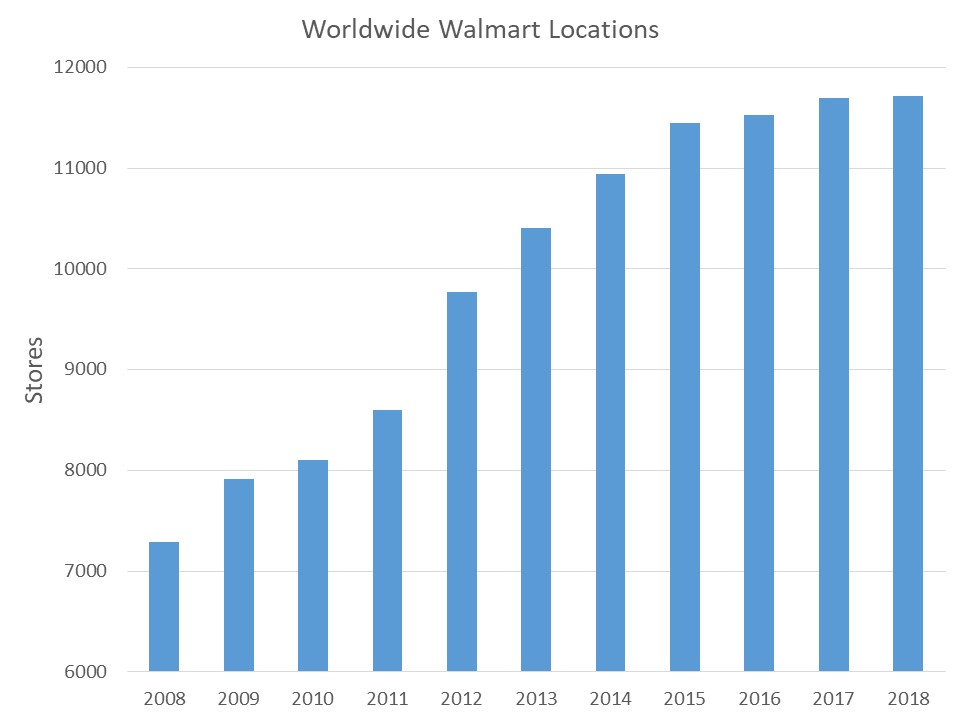
Delivering non-perishable goods is one thing. Making sure you’re happy with the apples and oranges they picked for you and delivered to your door is another thing all together. Americans are picky about their fruits and vegetables. And it’s why the grocery deliver business hasn’t been able to scale. It’s a major endeavor.
Amazon announced last week it is opening a handful of grocery stores separate from its Whole Foods operation. The key to groceries is execution. It’s not good business to bet against Bezos, but when you look at Wal-Mart’s footprint, it’s hard not to believe there will be some roadblocks. Read Walmart’s story below.
Wal-Mart was founded in 1962 by Sam Walton when he and his brother James “Bud” Walton opened the first Wal-Mart Discount City in Rogers, Arkansas. Since then, Wal-Mart has grown to become the largest publicly-owned retail company in the world. In the United States, the company includes Wal-Mart discount stores, Supercenters, Neighborhood Markets, and Sam’s Club warehouse membership clubs. The company also has many international operations. The company operated about 6,363 international Walmart stores in 2017.
Beginning in the early 1990s, Wal-Mart went to great lengths to increase their market share. They introduced a full line of groceries into their stores, diversified their market by appealing to certain ethnic groups through bilingual advertisements, and took steps to promote the awareness of environmental issues.
In the 2018 fiscal year, Wal-Mart operated over eleven thousand stores worldwide and these stores generated over 495 billion U.S. dollars in net sales. Even though Wal-Mart has been criticized for their low wages, they claim to do a lot of good for lower income households. Figures show that a family can save about one thousand U.S. dollars a year with their ability to cut prices on some products, such as toys, by thirty percent in order to stimulate more sales.
Read more here.
Originally posted on Your Survival Guy.





